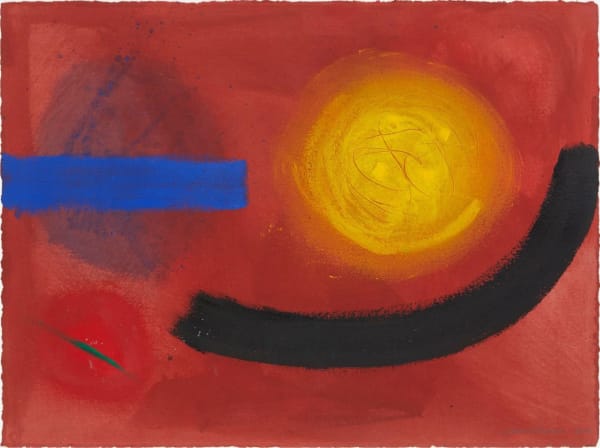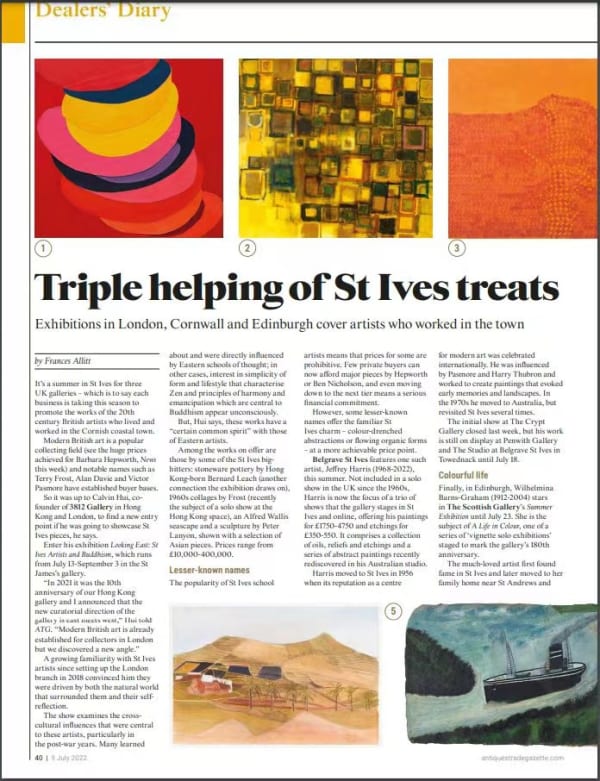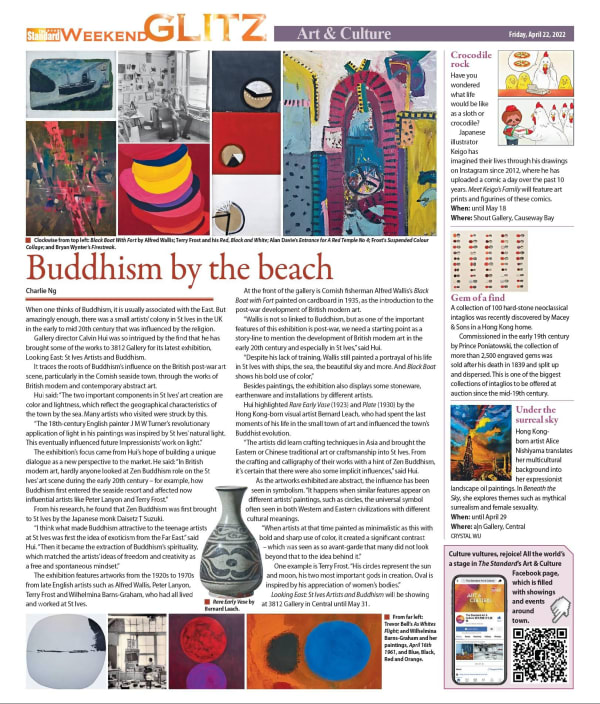Wilhelmina Barns-Graham 威廉明娜.巴恩斯-格雷厄姆
Born in the Scottish coastal town of St Andrews in 1912, Wilhelmina (‘Willie’) Barns-Graham took to St Ives like a duck to water when she arrived in 1940. She moved to the south coast, she said, partly to ‘escape’ a domineering father who did not approve of her career as an artist; she was also drawn there through her friendship with fellow Scot Margaret Mellis, with whom Barns-Graham had studied at the Edinburgh College of Art. Mellis had recently arrived in St Ives with her husband, the critic Adrian Stokes, with the artists Ben Nicholson, Barbara Hepworth and Naum Gabo following close behind.
Barns-Graham quickly made an impression on these older artists; a studio was found for her, next to Nicholson’s, within two months of her arrival, which would later play host to the first meetings of the influential Crypt Group in 1946. In 1949, along with Nicholson, Hepworth, and a number of younger abstract artists including Bryan Wynter and Peter Lanyon, Barns-Graham became a founding member of the Penwith Society, an avant-garde rival to the established St Ives Society of Artists. Barring short stays in Leeds and London in the late 1950s and early ’60s, Barns-Graham kept a studio in St Ives for the rest of her long life.
Her paintings veer between pure abstraction and representation of landscape, though there was never a clear line between these aspects of her practice. Barns-Graham’s main preoccupation was the interior rhythms of forms and structures found in nature, which she replicated through dynamic juxtapositions of colour and of shapes both organic and geometric.
With his constructivist sculptures exploring similar concerns, Naum Gabo was chief among Barns-Graham’s early influences; she owned a small version of his Spiral Theme (1941), a transparent construction of acetate and Perspex described by Herbert Read as ‘hovering […] between the material and immaterial’. Through the 1940s and ’50s, Barns-Graham created a series of paintings concerned with the arrangement of geometrical forms, frequently using the proportions of the Golden Section.
A significant turning point in her work came with a voyage to Grindelwald, a village in the Swiss Alps, in 1948. Here, Barns-Graham was enraptured by the spectacular valley glaciers, with their vast torrents of ice bursting through the gorge, at once apparently frozen still and yet in constant motion. Barns-Graham spent the next four years working on her series of Glacier paintings, attempting to capture something of this intricate grandeur in form, line and hue; she described the challenge as that of ‘combin[ing] all angles at once, from above, through, and all around, as a bird flies, a total experience.’ They remain among her most celebrated works.
Throughout the 1950s and ’60s Barns-Graham was included in major touring exhibitions organised by both the UK Arts Council and the Scottish Arts Council; her first solo show was at Redfern Gallery, London, in 1952, and she was included in the seminal survey of ‘British Abstract Art’ at Gimpel Fils in 1951. From the early 1970s she began to divide her time between St Andrews and St Ives; these later decades brought solo museum exhibitions at the Scottish National Gallery of Modern Art, Edinburgh (1996–97) and Tate St Ives (1999–2000). Two years before her death at 92, Barns-Graham was awarded Commander of the British Empire for services to art. Her work is held by the Tate, the Victoria and Albert Museum, and the Scottish National Gallery of Modern Art, among many other UK public collections, as well as by the Art Gallery of New South Wales in Sydney.
-

Looking East: St Ives Artists and Buddhism
13 July - 10 September 2022 LondonTouring all the way from Hong Kong to London, Looking East: St Ives Artists and Buddhism explores the unique relationship between artists working from St Ives during the post-war period...Read more -

Masterpiece London
30 June - 6 July 2022 Art Fairs, LondonFor Masterpiece London 2022, 3812 Gallery is proud to present Spirit and Landscape, a curated selection of major landscape works from the last one hundred years. One of the most...Read more -

Looking East: St Ives Artists and Buddhism
21 April - 31 May 2022 Hong KongLooking East: St Ives Artists and Buddhism explores the unique relationship between artists working from St Ives during the postwar period and Eastern spirituality. Once a small fishing village in...Read more










